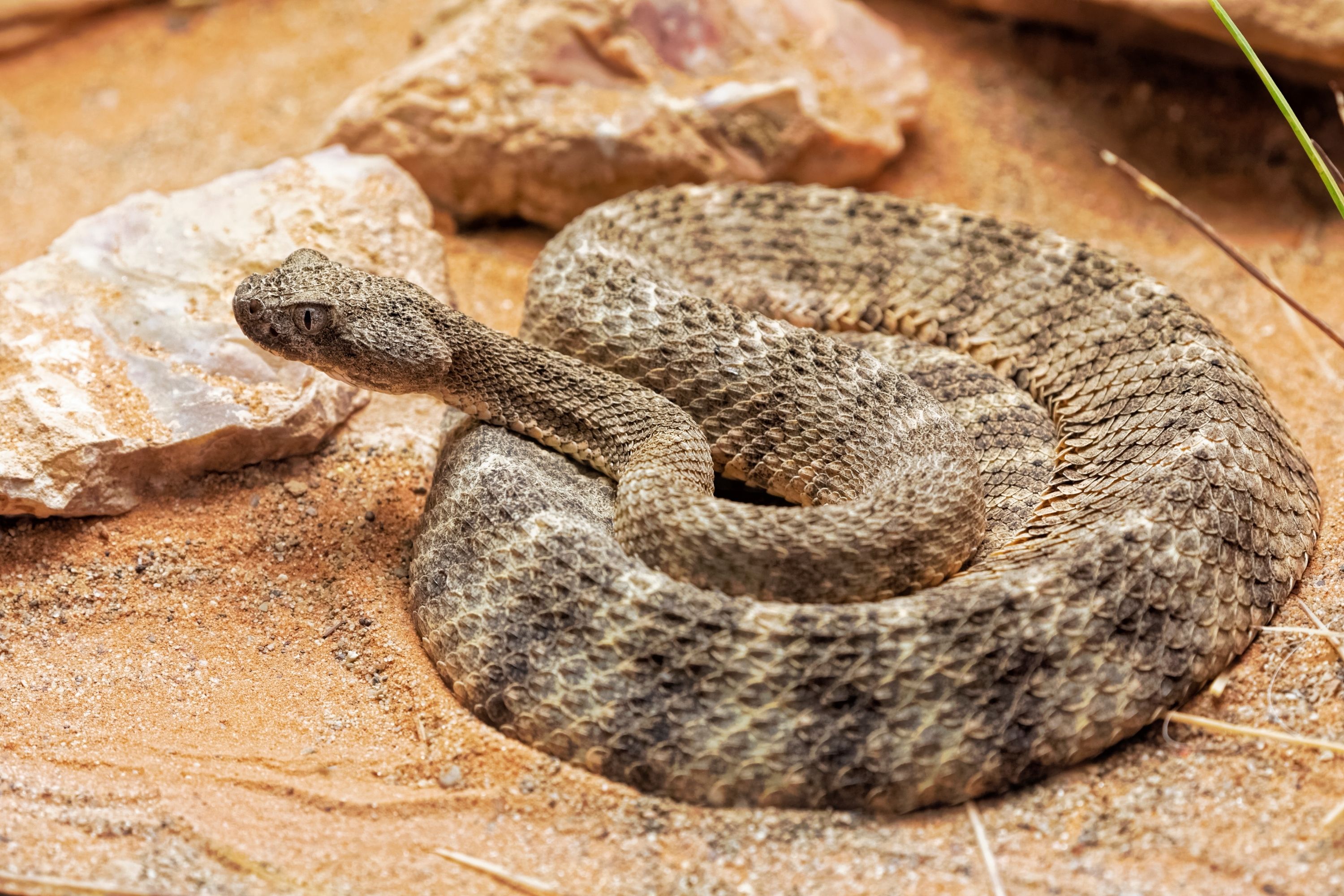Tiger rattlesnake
(Crotalus tigris)

Description
The tiger rattlesnake (Crotalus tigris) is a highly venomous pit viper species found in the southwestern United States and northwestern Mexico. No subspecies are currently recognized. The specific name tigris, Latin for "tiger", refers to the many narrow dorsal crossbands, which create a pattern of vertical stripes when viewed from the side. The tiger rattlesnake (Crotalus tigris) is a highly venomous pit viper species found in the southwestern United States and northwestern Mexico. The specific name tigris, Latin for "tiger", refers to the many narrow dorsal crossbands, which create a pattern of vertical stripes when viewed from the side. The tiger rattlesnake is easily identified by its small, spade-shaped head, which is about 1/25 of its total body length. It has the smallest head of any rattlesnake, and a large rattle. The color pattern consists of a gray, lavender, blue-gray, pink, or buff ground color that usually turns to pink, pale orange, or cream on the sides. Tiger rattlesnakes are the only rattlesnake with crossbands on the anterior portion of their bodies, with a series of 35 to 52 gray, olive, or brown bands across the dorsum consisting mainly of heavy punctations. These crossbands have vague borders and are wider dorsally than laterally. Also mid-dorsally, the crossbands become wider than the spaces that separate them. Posteriorly, the crossbands become darker and more clearly defined. They have six to 10 posterior rings. The markings on the head are mostly vague and irregular, although towards the rear of the head, a few dark markings may be arranged as paired occipital blotches and upper temporal streaks.The most distinguishable mark on the head is a dark cheek strip.Dorsal scales are keeled and in 21 to 27 rows. A relatively small species, individuals can weigh as much as 454 g (16.0 oz) and can range in length from 460 to 910 mm (18 to 36 in), with an average length of 609 mm (24.0 in). The largest specimen on record measured 88.5 cm (34.8 in) (Klauber, 1956), until H.M. Smith and Brodie (1982) reported a maximum length of 91.2 cm (35.9 in). Females have 164 to 177 ventral scales, and males have 158 to 172 ventral scales. Females have 16 to 21 caudal scales, and males have 23 to 27 caudal scales and are typically larger than females. They have relatively small eyes with elliptical pupils.
Taxonomic tree:







